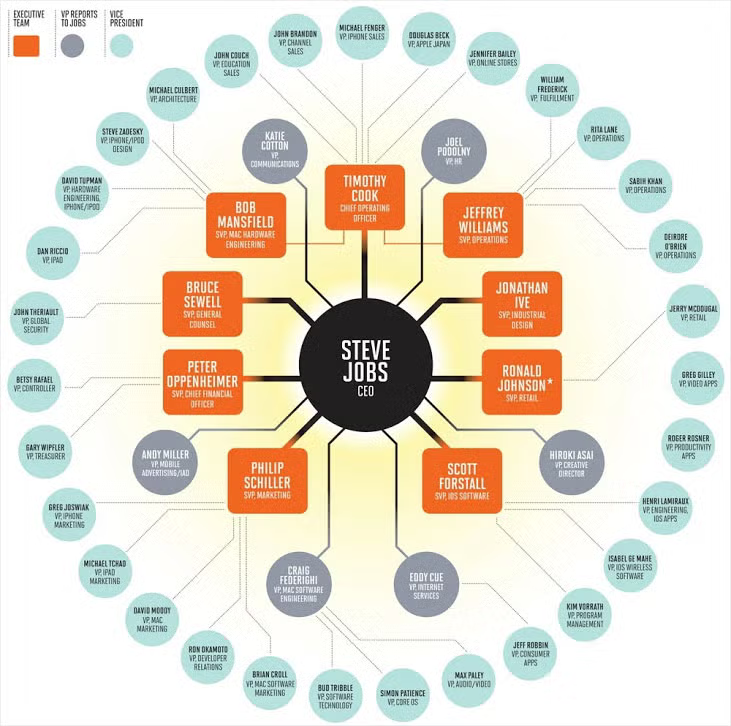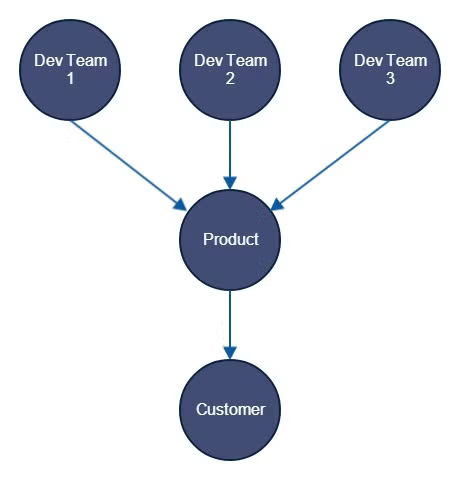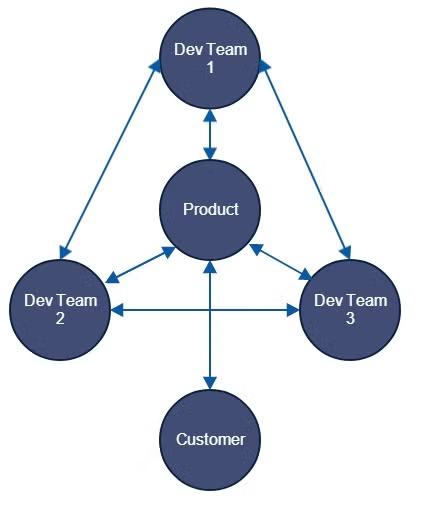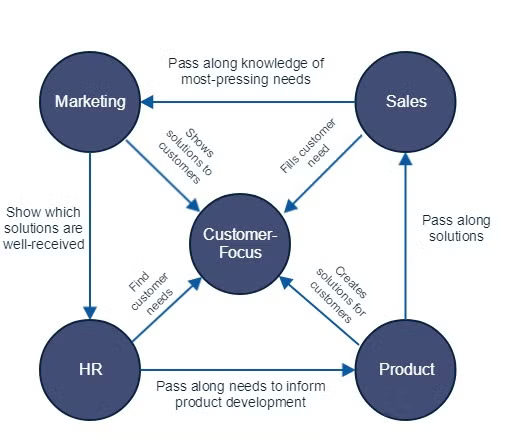Product Teams are Influenced by Their Org Structure
Anyone who has ever worked on a product team has probably heard the warning “don't ship the org chart”. This is a reference to the fact that products can be limited by the org structure of development teams. Without having a clear organizational structure, teams can struggle to take enough ownership of what they're working on, allowing for unnecessary redundancies and confusing setups for the user because it's — and we quote — not their responsibility to solve for this.
But this idea of not shipping the org chart is easier said than done. What you ship, and everything else you do as a company, is a by-product of your org's structure. Get your structure right, and what you offer will align perfectly with customers. Get your structure wrong, and you'll offer something that highlights the problems of your organization more than it shows value and understanding for your users.
Your Org Chart Should Not Be "Cookie Cutter"
When deciding on how to organize their company, most leaders will base it off of the models of big companies like Apple or Amazon. They're successful, so they must be doing something right, right?
Let's take a closer look at Apple's organizational structure (while Steve Jobs was still at the helm).

[Source: Fortune]
Apple's structure is interesting. You'll find that there’s no one in charge of the entirety of a type of product among their executive team. No one works just on iPhones or just on Macs. Instead, their structure is functional — it's split up by areas of specialization like software engineering, hardware technologies or hardware engineering.
This setup works for them because even though Apple's such a large company, a functional structure allows for more collaboration. It ensures that there's continuity across multiple Apple devices and nothing slips through the cracks.
Many companies will see how well this works for Apple and think that it will be the key to helping them succeed as well. But in reality, only Apple can be organized like Apple. And only your company can be organized like your company. The one thing we can learn from Apple's structure is this: put customers first.
This doesn't mean appealing to every wish of every customer. It means thinking about what is required to make every product successful and how you can create the best customer experience with each. Does this mean making sure each product has the same UX or that each retail location has the best service? The answers to these foundational questions should shape how you build your structure.
Organize Your Company in a Way That Works for Your Customer and You
Of course, finding the right structure for your company is easier said than done. Just as every company is unique, every company will also have a unique set of customers with a unique set of needs. The main thing to remember when creating your company structure is to cater to your customer's needs rather than the needs of the company. This will create a balance that works well — if you build your company around the customer's experience, everything will be aligned.
Let's take a look at how a company-centric point of view can hinder your growth while a customer-centric point of view can lead you to success.
A Company-Centric Structure is Segmented
When the company's goals are at the center of how your organization operates, each of your dev teams is tasked with a different job. The problem here is that each team is acutely focused on meeting their individual goals. This disconnect between teams working on their own means that when they come together, the end product is also disconnected.
Shipping the org chart with a company-centric structure, all but guarantees that your customers will have a flawed experience. They may end up experiencing three (or more!) slightly different takes on the same feature.

Your dev teams may only communicate to pass on information they've gathered while completing their individual goals. This lack of communication may end up with certain features being redundant and others being overlooked, making customers feel like their needs aren't being met.
A Customer-Centric Structure is Collaborative
When the focus is on the customer and their needs, your structure instead looks like a triad — first aligning the team and then shipping to the customer.
Each of your teams communicates and contributes to produce a product that fulfills the need of the customer. The customer has a positive experience and is often included in the dev process, sending feedback to the team to help shape future development.

Having a customer-centric structure isn't just limited to the dev team. The entire company should be organized around the idea of people first, ensuring that teams talk and align internally, then have a single channel to customers.

Having the customer at the center of your structure means that every member of your company is constantly asking: How can we help the customer? Every department is informed by the customer and their needs and communicates with other departments to work together in developing solutions. Each department knows that they can't solve every problem alone and focuses on giving the customer what they need.
As an added bonus, with this structure, everyone's department goals align: helping to solve the customer's problems.
Your Organizational Structure Needs to Grow with You
If you look up the story of any successful company, you'll see that their company structure wasn't a one-and-done. It went through different iterations to find the structure that worked best for them at the time and then as the company grew and changed, so did the structure.
Iteration is the true secret to finding your perfect structure. You should be constantly looking for ways to modify your structure, helping your company grow and fulfilling more of your customer's needs.
The great thing about using Gliffy to outline your organizational structure is that you can continuously edit while tracking each version you've saved. Get started with a free trial — we're here to help you get your ideas out of your head and into the real world!